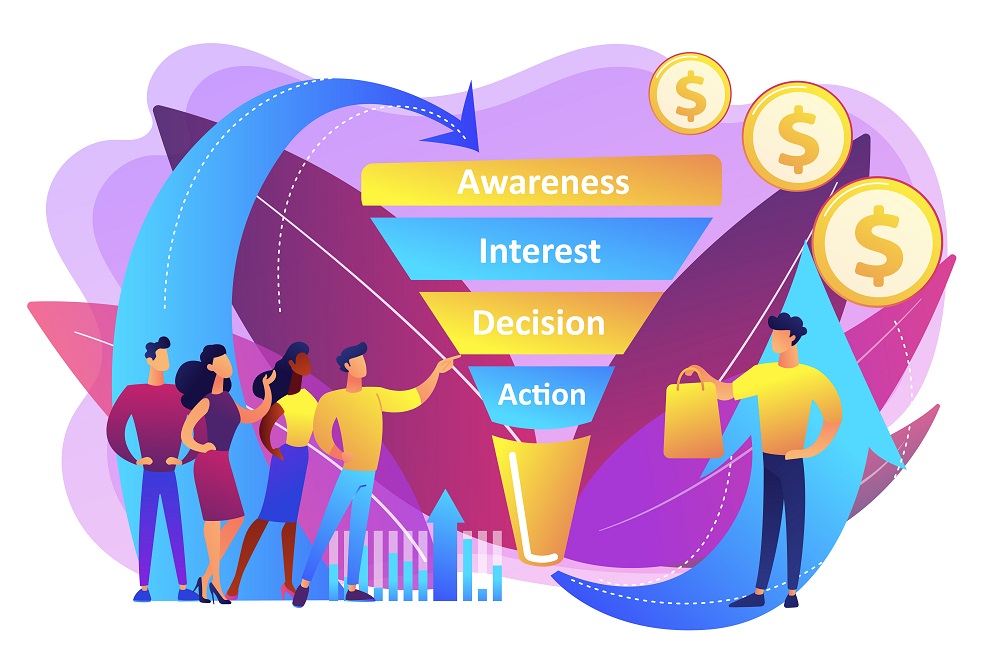How Content Marketing makes your business successful

Content marketing is one of the most effective methods for building brand awareness and attracting new customers to your business. It’s basically a marketing strategy focused on creating, publishing and distributing valuable and relevant content online, with the purpose of reaching a targeted audience and stimulating profitable customer action. The Content Marketing Institute (CMI) describes it as ‘instead of pitching your products or services, you are providing truly relevant and useful content to your prospects and customers to help them solve their issues’.
Ultimately, whether in China or any other international domain, content marketing is a critical component for long-term, sustainable growth. We look at some of the key measures you can undertake to implement this for your own business.
Nine content marketing measures to help make your business successful
1. Have a clear, measurable business goal.
According to the Content Marketing Institute (CMI) lead generation, brand awareness, customer engagement, lead nurturing, sales and customer retention and loyalty are some of the most common business goals for content marketing. Once you’re done this you should identify your target audiences and decide how your content can best serve that audience with this business goal in mind. With any content strategy, you should ask yourself, “how does this tie back to our business?” While it’s critical you write quality content to grow your audiences, it won’t help attract prospects if it doesn’t tie back to your business (Source: CMI).
2. Understand your buyer’s journey.
A good content marketer understands that their strategy needs to engage and delight a reader at any stage of the buyer’s journey, whether it’s a B2C or a B2B customer. Developing a buyer persona, describing their likes and dislikes, their interests, their responsibilities, and their pain points can be a great way to visualise your audiences. While your content should be used to initially attract new visitors to your brand or business website and social media accounts, it should also be used to convince hesitant prospects to purchase and encourage customer retention and long-term brand loyalty.
 3. Identify your conversions and hooks.
3. Identify your conversions and hooks.
For your business and your prospects buying journey, you need to determine the actions that can help you achieve those goals. What are the triggers or ‘hooks’ that will drive your prospects to respond to your content and take the desired action? Once you’ve identified the key conversions for your content marketing, you can focus on developing the messaging.
4. Develop your messaging.
Don’t sit in an ivory tower when developing your messaging and hooks. Use consumer market research if you’re a consumer-based business, or if you’re marketing to other businesses, liaise with your sales and customer service teams in your organisation who would have more direct contact with customers and can provide greater insight into who they are and what they need. Some key rules for both B2C and B2B messaging are:
Create strong headlines – If you want your blog posts to attract more eyeballs, you have to create a magnetic headline. A good headline always sparks interest which can enter into your reader and potential customer’s world. But it should be relevant. Refrain from a click-bait approach which can hurt your credibility.
Create engaging and thought provoking content – A guru of content writing Neil Patel recommends three things: i) leave readers with questions, ii) have an important and promising intro and iii) people love stories, so write some good stories!
Make your content actionable – Good content respects the reader and rather than telling them what to do, provides them with assurances that they know best how to use the material.
Communicate better by adding images and videos – Pictures and videos will always help to illustrate your points. Using images and videos is a powerful way of holding a viewer’s interest. This content not only communicates a verbal message, but also includes other messages, such as environment, colour, and depth. Videos also demonstrate steps on how to do something. They can show a product or people in action. It’s not just telling what to do, but showing how to do it (Source: com).

5. Promote your content.
A good content distribution strategy should include both organic and paid promotion channels. Social media, tweets, posts, and SEO are some good ways to promote your content organically. Sponsored posts, advertising, promoted tweets, and SEM are just some examples of paid promotion you can do. Also where appropriate, you should also reach out to influencers (KOLs) who you’ve established good relationships with, to help amplify your content.
 6. Repurpose your content.
6. Repurpose your content.
It takes time and talent to craft highly useful, engaging content – so, by finding ways to recycle existing content, you’re ensuring peak efficiency. Additionally, repurposing content allows you to reach new audiences. You might turn a podcast topic that went down well into a blog post? Alternatively, maybe you created a blog post that performed significantly well – so you might consider creating a Vlog that covers a similar topic, to reach an audience that prefers video over text? Repurposing your content will also ensure your audience has more than one chance to see it. Your readers, viewers, and followers are kept busy (Source: Hubspot).

7. Ensure your brand voice remains consistent across channels.
Whether you visit Spotify’s Twitter page, YouTube account, or stumble across one of their billboard advertisements, you can quickly get a sense for the brand’s funny, candid, youthful voice. This is what makes people feel connected to Spotify – its unwavering brand consistency, regardless of the channel on which you might choose to engage.
8. Use some analytics tools to track the performance of your online promotion campaign.
Quality content is important, but it doesn’t mean much for your business if your visitors and viewers don’t convert into customers. By carefully monitoring, tracking, watching and reporting on the numbers, you’ll be able to gauge what’s working, what isn’t, and what could be working better.
9. Remember to focus on conversion rates, not just traffic generated.
This is a key part of making your business successful through content marketing. Perhaps your WeChat account has only 1,000 followers — alternatively, your blog has 7,000 readers. However, your WeChat account has a conversion rate of 7%, but your blog only converts at about 0.01%. This should tell you that, while your blog is important for an initial introduction to your business, your WeChat account is critical for targeted sales, and shouldn’t be ignored. Additionally, focusing on analytics will help you refine and improve your strategy for the future (Source: Hubspot).
How Melchers can support you in China
Melchers provides a complete end to end digital-execution service for Western-brands wishing to define a strategy for China through to market implementation. We manage the client relationship in Europe and China, to ensure strategy, planning, and projection is set out at the onset. Local teams based in Shanghai and Beijing oversee campaign implementations. Among our digital marketing services, we design, build and optimise web and mobile presences in China to drive customer acquisition including SEO set-up and optimisation services. Our team engages in design, content creation and management of your website, blog and social media accounts while driving digital marketing campaigns.
To learn more about how we can support you, please contact us at marketing@bj.melchers.com.cn.


